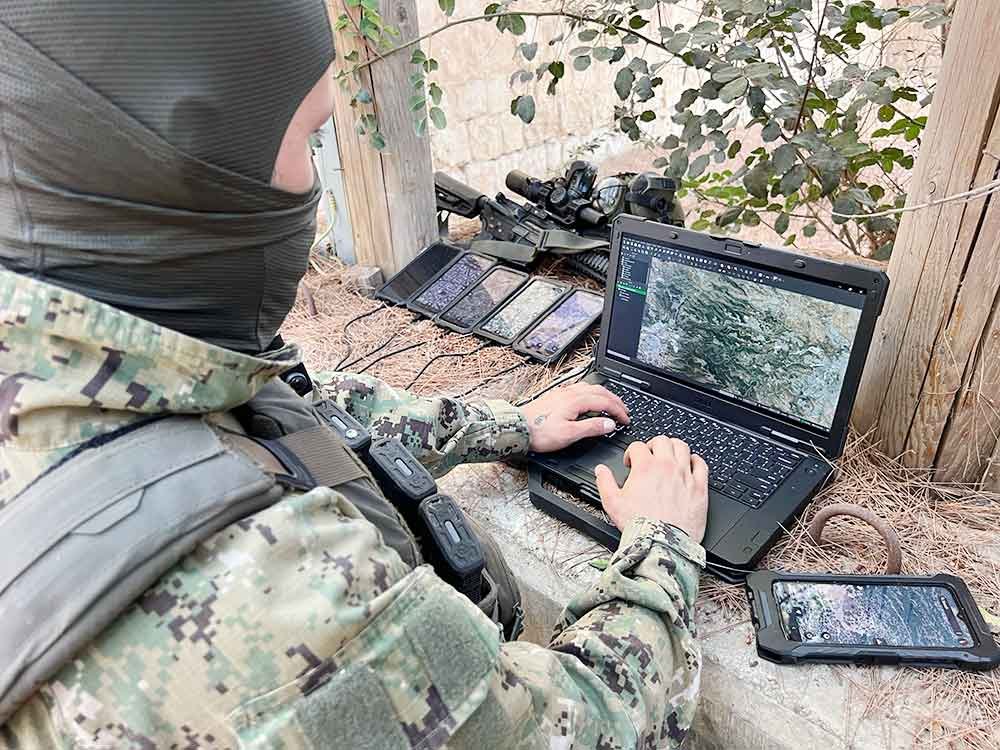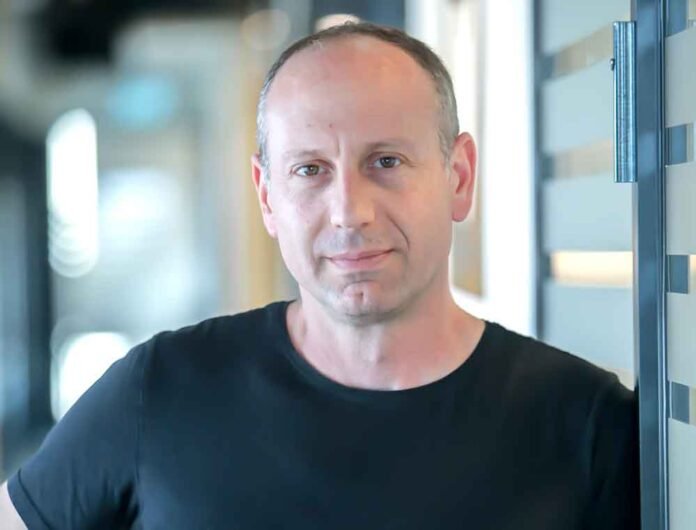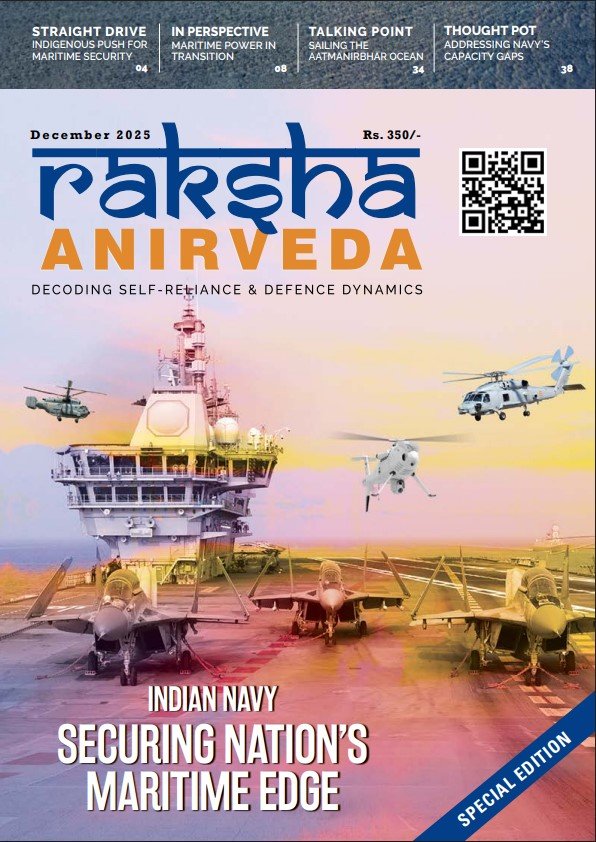ASIO’s systems empower tactical ground forces with tools that enhance situational awareness and ground dominance, enabling greater self-sufficiency and operational independence on the battlefield. Tomer Malchi co-founded the company with his brother Yaniv Malchi and under his leadership, ASIO became a pioneer in empowering tactical forces with mission-critical situational awareness for battle management and self-positioning systems for aerial navigation for GNSS-denied environments.
Tomer Malchi, a former officer in the IDF’s special field intelligence and reconnaissance unit, nearly 20 years ago along with his brother Yaniv, recognised a critical gap in the technology that tactical units operated in the field. That realisation led to the creation of ASIO’s flagship system, Orion, now a combat-proven platform used for mission management, situational awareness and tactical collaboration across defence, homeland security and disaster response operations. The system is fully deployed by the IDF.
Malchi is recognised as an industry leader in developing advanced technologies for these GPS-contested environments. Today, ASIO – operating with the spirit of a technology startup – is positioned at the forefront of innovation in this critical area of modern defence. Malchi’s vision has helped the company expand its core technology platform into other products that give military and first responders, such as the IDF’s Home Front Command, an important edge in their missions, including the development of patented solutions in GIS, passive target acquisition, north-finding technologies and tactical communication systems.
In a candid conversation with Raksha Anirveda’s Editor Ajit K. Thakur, ASIO’s co-founder and CEO Tomer Malchi eloquently explained his company’s products, its expanding global footprint and India’s position in ASIO’s growth strategy. Edited excerpts:
RA: Can you share with our readers more about ASIO and how your systems support frontline forces in contested or GPS-denied environments?
TM: ASIO develops advanced combat solutions that empower frontline units, even in highly contested environments. Our portfolio includes battle and mission tactical management systems, tactical augmentation tools, optical navigation for GPS-denied scenarios, advanced target acquisition, and north-finding technologies.
All of our systems are combat-proven and fully deployed across all branches of the Israel Defense Forces (IDF) – land, air and sea – and are trusted by defence customers worldwide. Our goal is to provide tactical ground forces with intuitive, reliable tools that enhance situational awareness, decision-making, and battlefield effectiveness.
All of our systems are combat-proven and fully deployed across all branches of the Israel Defense Forces (IDF) – land, air and sea – and are trusted by defence customers worldwide. Our goal is to provide tactical ground forces with intuitive, reliable tools that enhance situational awareness, decision-making, and battlefield effectiveness
RA: Can you tell us about ASIO’s flagship product, the Orion?
TM: The Orion system (known in the IDF as “Olar”) simplifies mission planning processes through intuitive interfaces and advanced terrain analysis tools, while also boosting action management. It also seamlessly integrates all tactical information into the user’s real-world view using Augmented Reality to enhance continuous situational awareness on the ever-changing battlefield.
The system features a rich, intuitive interface that simplifies complex operational tasks, enabling users to access critical information and enhance situational awareness quickly. Orion renders and augments all tactical information in 3D, enhancing and clarifying both planning and execution.

Using any drone imagery as input, the system also enables in-the-field production of 3D by the complementary Taurus system, Raster, and DTM/DSM, allowing planning and execution to be performed with the most up-to-date information. Key features and benefits include that it’s battle proven, offline/online operations, modular and scalable architecture, fast deployment and minimal training and rapid GIS data dissemination.
RA: Over the past two years, Israel’s defence ecosystem has faced intense operational demands and rapid innovation cycles due to the war. What lessons or performance insights has ASIO drawn from this and how have they shaped the deployment priorities of your systems in the field?
TM: Our Orion system is operationally deployed with the IDF, where it has become a core element of the soldier’s digital situational awareness suite and the IDF’s ground dominance. Noting its integral role, the IDF has increased its Orion units extensively in the last two years. That growth reflects the system’s proven performance under real operational conditions and its adaptability across different combat situations.
ASIO’s focus on combat-proven solutions for the tactical edge and warfighters sets it apart in the defence technology landscape. While many defence companies concentrate on large-scale platforms, Asio operates at the battalion and maneuvering-force level, where technology directly impacts mission success
The intense operational conditions these soldiers have faced over the past two years have provided invaluable feedback that directly shapes how we prioritise and refine our systems. One of the key lessons has been the importance of simplicity, speed and reliability – ensuring that soldiers can operate Orion intuitively and depend on it in high-pressure environments. We’ve also focused on rapid deployment, interoperability and enhanced power management, so that the system can be seamlessly integrated across IDF units and with our international customers.
Taurus is designed to give battalion intelligence officers real-time autonomy and critical battlefield insight. The system delivers updated intelligence directly to front-line units and enables commanders to analyse terrain, collect intelligence from drones and sensors, and generate combat plans on the spot. A key new capability is the creation of 3D terrain models in real-time
RA: ASIO recently announced that it is supplying hundreds of its Taurus systems, a tactical intelligence system, to the IDF. How does the system impact the soldier on the battlefield?
TM: Taurus (known in the IDF as “Noam”) is designed to give battalion intelligence officers real-time autonomy and critical battlefield insight. The system delivers updated intelligence directly to front-line units and enables commanders to analyse terrain, collect intelligence from drones and sensors, and generate combat plans on the spot. A key new capability is the creation of 3D terrain models in real-time. Drones scan the operational area and instantly produce an accurate, photo-realistic model, allowing commanders to plan missions based on current terrain conditions.
Operating alongside the Orion system, Taurus provides a battalion-level layer of situational awareness, empowering units to work independently while simultaneously updating dozens of Orion systems with maps, apps and intelligence data at record speed. Intuitive and integrated, Taurus enhances mission planning, situational assessment and operational decision-making, giving commanders and intelligence officers the tools to act decisively in dynamic battlefield environments.

RA: With combat manpower shrinking and the emphasis on faster, more autonomous operations, how is ASIO addressing the need for soldier lethality and survivability? What role do your systems play in enhancing ground unit effectiveness under these conditions?
TM: As manpower decreases, technology becomes the true force multiplier, allowing units to achieve more with fewer soldiers. Our systems are designed to enhance soldier lethality and survivability while keeping equipment lightweight and intuitive, so it integrates seamlessly into the soldier’s loadout.
Manoeuvre units need to be resilient and self-reliant – able to gather intelligence under communications or GPS-denied conditions and deliver fires independently, without waiting for higher-echelon allocations. Our platforms enable that autonomy
Manoeuvre units need to be resilient and self-reliant – able to gather intelligence under communications or GPS-denied conditions and deliver fires independently, without waiting for higher-echelon allocations. Our platforms enable that autonomy, whether through rapid ISR from UAVs, real-time tactical data, or fast-deployable tools that let units react to fleeting targets within seconds. Ultimately, tactical superiority comes not just from the technology’s capability, but also from ensuring it’s accepted and used effectively by the soldier in the field.
RA: Are ASIO’s systems available in India?
TM: Yes, our Orion can be deployed in India, and our land systems are accessible to support warfighters from the battalion level down. These systems are designed to complement existing C4I architectures, enabling soldiers to operate more autonomously while enhancing situational awareness across the force. They are intuitive, quick to deploy, and easy to use, ensuring that units can act decisively in dynamic environments.
As the Indian Armed Forces continue their modernisation and networked warfare initiatives, ground units must become more technology-enabled and fully integrated at both the soldier and platform levels. For an army as geographically and operationally diverse as India’s, these systems can help shift ground dominance and provide a common operational language across India’s forces, enhancing coordination and battlefield effectiveness.

RA: How does India fit into ASIO’s growth plans?
TM: India is an important part of ASIO’s broader growth strategy. Our systems are designed to be deployed quickly and effectively, and we see potential for collaboration with local manufacturers and defence partners. The goal is to provide Indian forces with advanced tactical technologies while fostering domestic capabilities. We are fully aligned with that and are exploring how best to engage and support the market.
As manpower decreases, technology becomes the true force multiplier, allowing units to achieve more with fewer soldiers. Our systems are designed to enhance soldier lethality and survivability while keeping equipment lightweight and intuitive, so it integrates seamlessly into the soldier’s loadout
RA: ASIO has seen the rapid adoption of both Orion and Taurus systems by the IDF and other international clients. How is the company positioning itself for growth in the global defence technology market, and what differentiates its offerings from others?
TM: ASIO’s focus on combat-proven solutions for the tactical edge and warfighters sets it apart in the defence technology landscape. While many defence companies concentrate on large-scale platforms, Asio operates at the battalion and manoeuvring-force level, where technology directly impacts mission success. Recent global conflicts have demonstrated a clear trend: without “boots on the ground,” it is nearly impossible to shift the battlefield paradigm. As a result, modern armies are increasingly investing not only in advanced platforms but also in technologies that empower ground forces.
This is precisely where ASIO’s systems, such as Orion and Taurus, deliver value, combining operationally proven performance, rapid deployment capability, and technological superiority. With a strong record of adoption by the IDF and international clients, Asio is well-positioned to expand globally, offering solutions that provide both technological and operational advantages in modern warfare.





